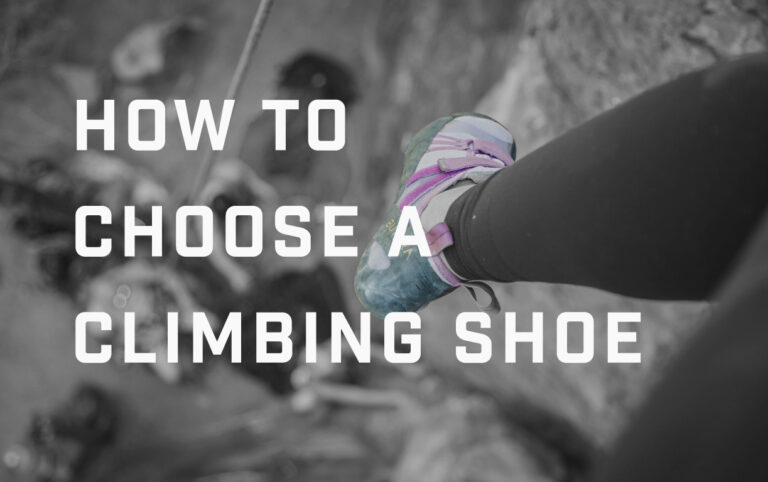Hands caked in grime after belaying?
Are there body lengths of twisty pigtails in your rope when you are following or maybe flailing below your brake hand while you belay?
You might need a rope bag!
And probably a few simple twist prevention and management tactics, but we will get into that below.
Now, do you really need a rope bag?
The simple answer is yes.
A more complete answer is that you don’t need rope bags, but using one is in your best interest.
Keep reading to find out why, what they can actually do for you and your rope, and our top picks based on a few key criteria.
If you just want to know our top choices, here are our favorite rope bags in each use category:
- Best all-around rope bag: DMM Classic
- Best backpack style rope bag: Metolius Speedster
- Best gym rope bag: Black Diamond Gym Solution 35 & Mammut Magic Rope Bag
- Most packable rope bag: Metolius Rope Tarp
- Top budget rope bag: Black Diamond Full Rope Burrito & Edelrid Liner Rope Bag
- Best all-around rope bag: Black Diamond Super Chute
Why You Should Use Rope Bags
Despite the fact that ropes are our lifeline when climbing, most of us tend to throw them around like accessories.
Keeping your climbing rope clean and dry will help it last longer so it can keep you safe.
Sometimes it’s hard to keep your rope out of the dirt and no matter what you do it’s going to get gunked up from your belay device and as it runs through anchor sets over and over.
Still, excess UV light, dirt, and moisture can be a climbing rope’s biggest enemies.
Consistent use of a rope bag will keep your rope protected from the environment but it also has two important added benefits.
Safety
One often overlooked but very important benefit of a rope bags are the tie-in points for the ends of your rope.

Any moderately new rope bag or tarp will have these points.
Tying the unused end/belay end off is good practice and will help prevent falls when lowering on long routes.
Additionally, these points help you easily find the ends of your rope and can prevent knotting of the rope after storage.
Rope Kinking And Twisting
The second added benefit of using a rope bag is rope management.
Storing a roped flaked in a rope bag will help reduce twisting and kinking overtime.
Why All The Twisting?
Rope twising is a common problem that can thwart even the most seasoned climber.
There are a few ways a rope can become twisted beyond all recognition.
One of the biggest opportunities you have to prevent rope twisting is actually when you first get a new rope.
When you bring it home from the shop and it’s still wrapped in its thick plastic bag snuggled tightly in the factory coil your rope is actually primed for getting twisted beyond all recognition.
It is important to uncoil a new rope correctly or you will be fighting the dreaded coil snake forever.
Its a simple step that doesn’t take long at all.
Here is how to uncoil a new rope to prevent excessive twisting:
Today many rope manufacturers like Tendon and Edelwiess ‘lap-coil’ their ropes at the factory.
This helps prevent twisting so the rope is ready to climb on right out of the package.
Still, uncoil your rope as suggested above just to be safe. It can save you repeated future headaches.
Coiling With Age
As ropes get older and well used they often begin to twist and kink, especially when using devices like a Grigri.
This happens because the outer sheath begins to twist around the inner core.
The more a rope is coiled and twisted and pulled the more frequent the kinks and twists seem to become.
Flaking your rope out before and after use is always a good idea and this helps to remove kinks and coils.
After climbing, however, most of us are used to coiling our ropes then throwing them in our packs for the hike out.
Overtime, this repeated coiling process can actually contribute to overall rope twisting.
Flaking a rope and storing it in a flaked configuration as you would with a rope bag actually allows the kinks to loosen themselves or prevents them twisting tighter.
How To Get The Twists Out Of A Climbing Rope?
Wether your rope is new or well used, getting the twists out can be a hassle.
Using a rope bag helps prevent the onset of rope twisting and allows your rope to rest in a neutral position so twist progression is lessened.
Otherwise, there are a few ways to get them out. While these are not fool proof de-twisting methods, they will help.
- Lay the entire length of your rope out flat in a yard or large open space (a clean and dry space). Let it sit for a short period of time, then flake the entire length loosely into a rope bag 2-3 times from end to end.
- Pull the entire rope length once or twice through an ATC style belay device (while on the ground and not climbing).
- If you have the space, with two people, start at one end of the rope. One person holds the end while the other, starting just below the same end, slowly flakes through the entire length of the rope while keeping tension through the rope the entire time.
Is Rope Twist Dangerous?
The crew over at Black Diamond had the same question.

They tested falls on very twisted ropes and found no conclusive reduction in holding strength.
Conclusion, rope twisting isn’t dangerous in a technical sense, its just a real pain.
What can be dangerous, however, is that twist getting in your way while climbing or belaying.
When seconding or leading a twisted rope can get stuck in gear or make cleaning gear difficult.
While belaying, twisted ropes can block the belay requiring the belayer to use a hand in untwisting the rope.
This can short rope the leader or provide ample room for dangerous errors while lowering.
Twists are the worst and one of the easiest ways to prevent them is by using a rope bag.
How Rope Bags Work
Rope bags keep your rope smooth, clean, and happy.
By allowing your rope to lay naturally without locked-in circular coils, a rope bag helps prevent buildup of twists.
As you already know, ropes are made of nylon which is an extremely robust material.
Overtime though, sunlight, dirt and moisture, can slowly degrade a rope’s material.
Using a bag protects your rope from UV light when not in use, protects it from potentially harmful substances during storage, and keeps dirt and moisture away when in use.
A rope bag usually consists of some outer sac with a large fold out tarp inside. Tarps are sewn into the bag on one side or are detachable.
The tarp is often water-resistant and as mentioned above has tie off points for each end of the rope.
When climbing the tarp lays flat to provide a clean-dry space for your rope.
After, you roll the rope up in the tarp then stuff it into the sac.
With the Super Chute rope bag, Black Diamond improved on the above method. You can see the more traditional way of stuffing a rope bag and their improved style in the video below.
What To Look For In A Rope Bag
Some climbing rope bags are designed for out door climbing while others are specifically for the gym.
There’s a few differences between the two styles. Namely, weight and packability.
It is important to decide where you will be using your bag before buying so you don’t waste time and money on the wrong gear.
Where Will You Use It Most?
A gym style rope bag will usually be too bulky and heavy for a long hike in to your favorite outdoor area.

Outdoor styled rope bags are light, highly packable, and can easily be used for outdoor or indoor climbing.

Versatility
Rope bags run the gamut from a simple tarp with some straps to full on convertible backpacks.
If you want a back pack with room for all your gear that also doubles as a rope bag, the DMM Classic is a solid choice.
For climbers who want more versatility BD’s Super Chute is an incredibly functional option.
With the Super Chute you get a durable low-weight rope bag with a solid shoulder strap so you can throw it in your pack or carry it on your shoulder with ease.
Gym Rope Bags
For gym climbing all you really need is a large sack or even just a tarp (an old tent footprint would even work).
You have probably seen people using those big blue IKEA tarp bags as rope bags.
Those are good, but they don’t maintain their shape and can be a pain to manage.
Gym climbing should be hassle free and time efficient.
For gym climbing look for a large free-standing design.
The most convenient and well thought out all in one gym bag is definitely the Mammut Magic Rope Bag (shown above).
While it is one of the bulkiest bags it is also the most plush. Mammut’s Magic Rope Bag is built to excel indoors.
With a freestanding structure, the Magic bag is designed so you can just put it down, open the top and tie in.
There are pockets and tie off points inside and the side walls have a thin foam padding to help protect your rope and keep the bag standing up straight no matter what.
It’s big enough to hold a rope and all your climbing gear for a day at the gym or sport climbing crag.
Bonus, its also perfect size for picnics, shopping, yoga classes, or the regular gym and the foam sidewalls coupled with durable outer material makes it a great sitting pad.
Outdoor Climbing Rope Bags
For outdoor climbing you need to consider weight and space.
The best outdoor climbing rope bags are light and packable while still maintaining versatility and durability.
Climbers looking for an all in one solution will not be disappointed by a bag like DMM’s Classic or Black Diamond’s Rope Tarp.
The Classic is big enough to carry a rope and gear. It can be carried as a shoulder bag or backpack.
There are 3 compression straps and plenty of external webbing to hang or strap on extra gear.
A classic minimalist rope bag, the Metolius Rope Tarp is light and highly packable for long approaches or space-conscious missions.
Black Diamond’s new Burrito Bag is a work of art.
Over the recent years it seems the company is paying more and more attention to small functional details and the rope bucket is no outlier.
Simple, light, durable, and super packable the rope bucket has everything you need and nothing you don’t.
Summary
Climbing rope bags are simple-inexpensive pieces of gear that can greatly extend the life of your rope.
They keep your rope clean and prevent excessive twisting or coiling.
Rope bags come in a variety of sizes and shapes. Decide where you will be using it most to get the right one for you.
Gym oriented bags are heavier and bulkier but offer a free standing option with plenty of room for all your gear.
Outdoor styled rope bags are lighter and more compact.
Most have at least one shoulder strap and a few tie-in points for rope ends.
Your rope is your lifeline. Take care of it accordingly. Get a rope bag.
What is your favorite rope bag?




